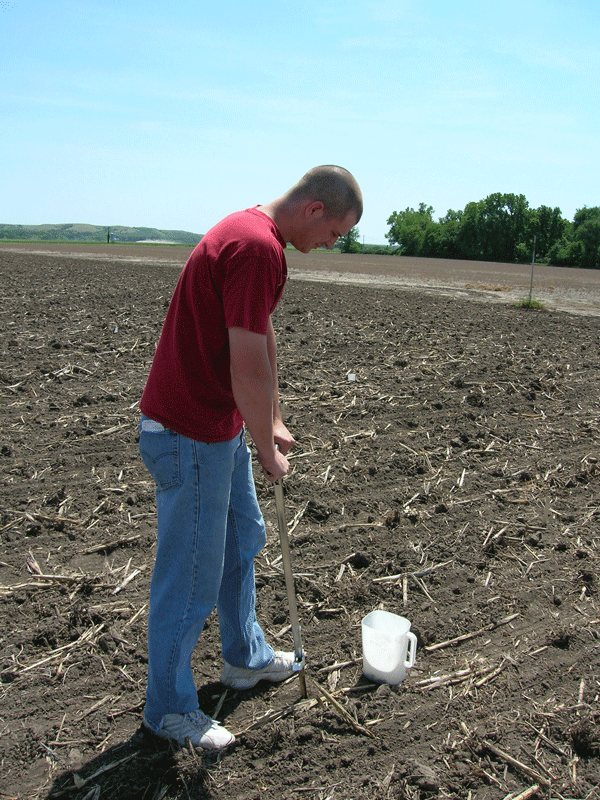If you plan to do your own soil sampling and use the K-State Soil Testing Laboratory, the following provides specific information on soil sample collection methods and mailing instructions.
- To take a sample, you will need a sampling tube, auger or spade, and a clean pail. (If you’re also having the soil analyzed for zinc, be sure to use a plastic container to avoid contamination from galvanized buckets or material made of rubber.) You will also need soil sample containers and field information forms from your local Extension office or fertilizer dealer.

- Draw a map of the sample area on the information sheet and divide your fields into uniform areas. Each area should have the same soil texture, color, slope, and fertilization and cropping history.
- From each area, take a sample of 20-30 cores or slices for best results. At the very minimum, 10-15 cores should be taken per sample. Mix the cores thoroughly in a clean container and fill your soil sample container from this mixture. For available nitrogen, chloride, or sulfur tests, a subsoil sample to 24 inches is necessary.
- Avoid sampling in old fencerows, dead furrows, low spots, feeding areas, or other areas that might give unusual results. If information is desired on these unusual areas, obtain a separate sample from the area.
- Be sure to label the soil container clearly and record the numbers on the soil container and the information sheet.
- Air dry the samples as soon as possible for the available nitrogen test. (Air drying before shipment is recommended, but not essential, for all other tests.) Do not use heat for drying.
- Fill out the information sheet obtained from your Extension office, or download a sheet from www.ksre.ksu.edu/agronomy/soiltesting
- Take the samples to your local Research and Extension office for shipping. Samples may also be sent directly to the lab by placing them in a shipping container or wrapping in heavy paper. Information sheets should be included with the package. Label the shipping container and tie securely. Mail the package to:
Soil Testing Laboratory
2308 Throckmorton Hall
Kansas State University
Manhattan, KS 66506-5504
A listing of the types of soil analysis offered, and the costs, are available on the web site mentioned above. For more information on the proper procedures for the Soil Testing Laboratory, see K-State publication MF-734 at: http://www.ksre.ksu.edu/library/crpsl2/MF734.pdf
Dorivar Ruiz Diaz, Nutrient Management Specialist
ruizdiaz@ksu.edu
Tags: